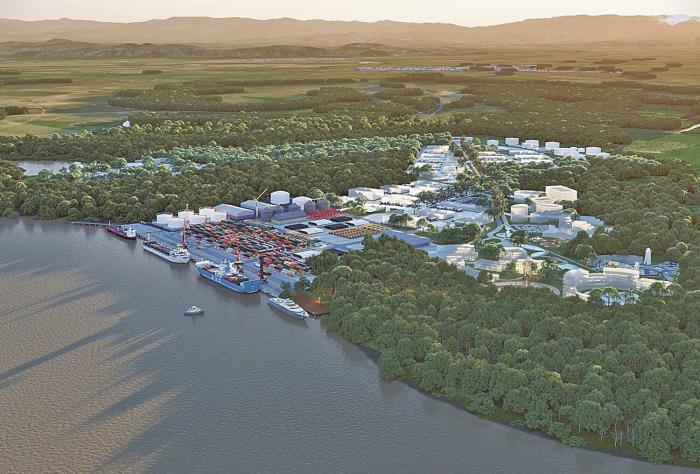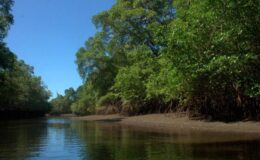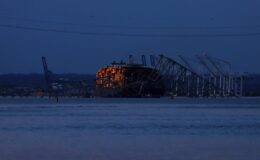Panama once again at crossroads of money V.S environment. 150 hectares of rainforest assigned.
- By : James Bryson
- Category : Bocas del Toro, Canal, Changuinola, Chiriqui, Colón, Conservation, Energy/Infrastructure, Infrastructure

https://www.laestrella.com.pa/economia/220411/chiriqui-potencia-zona-maritima-auxiliar
The Paridas Islands, located in the Gulf of Chiriquí, have a tourist attraction that attracts thousands of visitors, who arrive from boats or small cruise ships that leave the Pacific of Costa Rica. For several years, this movement of tourists has generated discontent in the western area of the country, since, according to the diagnosis of Chirican businessmen, the boats do not represent economic income for the area.
Felipe Rodríguez, president of the Chamber of Commerce, Industry and Agriculture of Chiriquí (Camchi), explained that the problem is due to the lack of seaports with the capacity to serve this type of ship.
Thus, the implementation and discussion of a series of projects to improve maritime logistics in the Western Pacific sector has begun.
The plan contemplates a megaport in Chiriquí Grande, Bocas del Toro, and in Barú, Chiriquí, the latter, has an investment of approximately $150 million and is led by businessman Ismael González together with a consortium of Panamanian and North American investors. The objective is to provide cabotage services and attention to cruise ships. The work, which has an area of 106 hectares, will begin in 2023.
Other projects that are contemplated to build hybrid shipyards in Puerto Armuelles by the Dutch company Greendock. The initiative is in an incipient phase and is looking for a seed capital between 3% or 5% to pay for paperwork, permits and land acquisition processes to obtain a loan and its investment exceeds $100 million. Its objective is to generate approximately 6,000 jobs, between indirect and direct, through the scrapyard service.
The Limones port is also looking for seed capital to be able to carry out the paperwork process. Camchi, for the moment, does not know the impact at the employment and social level, but assured that the plans detail the concession of the area to work a platform of piles on the sea, crossing Limones beach, since it will be a port for mega ships.
The Enrique Malek airport upgrade project is being worked on through the Chamber of Commerce and the Western Region Competitiveness Center (CECOM-RO). It consists of adapting the airport with a warehouse and a cold chain.
The adaptation of the border crossings of the Comprehensive Customs Logistics Project (PILA), such as Guabito, on the Bocas del Toro side; Río Sereno and Pasó Canoas in Chiriquí with an investment of $150 million, approved by the Inter-American Development Bank.
A dry canal, which emerged as an old initiative of the businessmen of Chiriquí more than 30 years ago and launched in the proposal of the Master Plan for the Economic Development of Chiriquí in 1994 and reiterated in 2005, also as a complement to the international cargo of the Panama-Colón transisthmian axis. Tourism.
Enrique Clément, president of the Panama Maritime Chamber (CMP), said that one of the benefits that these new logistics spaces will have will be the Cabotage Law, since it will offer investors clear rules on the investment they will make to have a legal certainty that their money will be shielded by law that protects them.
With the development of the Barú port, the Camchi Tourism Commission together with the Regional Competitiveness Center have already been carrying out a design of coastal marine circuits, coffee circuits and different routes, as tourist packages that can be presented to people who arrive from both the port, such as by air or land.
Rodríguez said that Camchi has already met with authorities in the southern part of Costa Rica, which has places similar to those in the Gulf of Chiriquí, to talk about how to work on the issue of passenger logistics so that tourists can pass more dynamically and quickly to the south of Costa Rica and vice versa.
Rodríguez pointed out that the need to push the projects arises because the producers required nearby ports to be able to lower costs so as not to affect the final cost of the product.
“From there the situation is generated that we needed to have small auxiliary service ports. We were not talking about wanting to compete with the ports of the capital, but that they were auxiliary so that we could deploy other types of businesses, investments would be spilled, which will generate a quantity of employment and better pay,” said the businessman from Chirica.
“This, in turn, would make it possible to remove a little overcrowding within the vertical logistics development that has taken place around the Panama Canal with the capital city and Colón,” he added.
The president of the CMP pointed out that, with all of the above, they need the Logistics Cabinet to listen to the projects that the province of Chiriquí has because the logistics sector “is not only Panama and Colón.”
He explained that everything that was developed around the construction of the Panama Canal has been successful, since it is what is known as the logistics hub, however, the poles of national production and exports occur at the extremes and it is there where the logistics hub has not had a reach.
“If we had an internal cabotage system from Chiriquí to Panama, not only the economic issue would be facilitated, but also the paperwork, the processes, and it would give the producer a guarantee that his product will not be harmed by a road closure, taking Keep in mind that every day you wake up with street closures”, Clément pointed out.
Rodríguez warned that if the province does not achieve auxiliary maritime connectivity to complement the area, it will be difficult for it to reach reasonable levels of prosperity to become true economic poles of this country, as it existed in the 1960s.
“If we manage to fit one of the pieces that we need, which is the maritime sector, for the different links that are required in the social and economic development of the region, I see a good future for our area and its potential to reach Central America,” Rodríguez emphasized.
In general terms, the port logistics maritime industry, including air logistics, the Canal, among others, contributed more than 30% to the gross domestic product (GDP). Within that figure, there are auxiliary maritime industries, ports, land transport, air cargo, the operation of the Colon Free Zone, warehouses and logistics parks, according to CMP data.
“Speaking of more than 30% of the GDP of a sector that has more than 200,000 workers gives an idea of what we contribute to the country,” said the president of the CMP.




No Comments